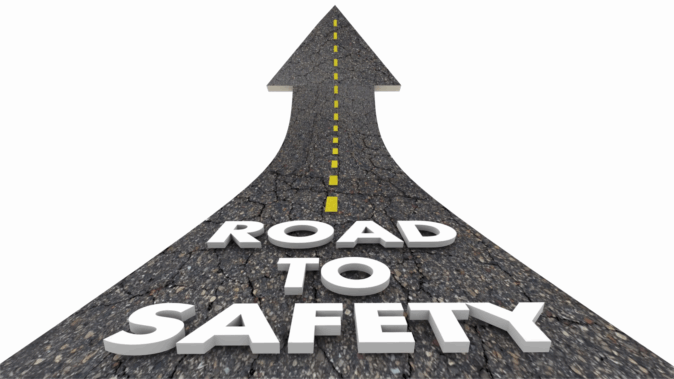The Fall Prevention Program aims to clearly identify guidelines to protect all employees engaged in outdoor or indoor work activities that expose them to potential falls from elevated heights.
The workplace must be assessed before each assigned job for potential fall hazards. When fall hazards cannot be eliminated, then the use of a guardrail, a fall protection system and administrative controls must be used.
There are three basic guidelines to follow if an employee could fall 4 feet (general industry) or 6 feet (construction industry), and they should be used in order when planning work at elevated heights. These guidelines will help keep workers safe when they’re working at heights, so be sure to use them!
- Fall prevention methods, such as guardrails.
- Fall protection systems, such as a restraint system, a positioning system and or a fall arrest system.
- Distance protection, providing a safe distance from the unprotected sides and edges (maintenance work only).
- Fall prevention plans, which are administrative controls that rely on special training and work practices.
The guardrail system consists of a top rail, 39 to 45 inches high in construction and 42 inches high in general industry, and must withstand a force of at least 200 pounds. A midrail is a rail midway between the toprail and the toeboard; it must withstand a force of at least 150 pounds. A toeboard is 3.5 inches from the working level and must withstand 50 pounds.
A restraint device is a system rigged to allow workers to move only as far as the sides of the work area, preventing the wearer from reaching a fall hazard. The anchor must withstand a load of 800 pounds or a structure that cannot be moved or pulled over. No rescue plan is needed.
A positioning device is a system that shall be rigged in such a way that an employee cannot free-fall more than 2 feet. The anchor must withstand a load of 3,000 pounds. A rescue plan is required.
A fall arrest device is a system that shall be rigged in such a way that an employee cannot free-fall more than 6 feet. The anchor must withstand a load of 5,000 pounds. A rescue plan is required.
Distance protection is determined by how close the employees can work near the unprotected sides and edges. The work area shall be at least 15 feet back from the unprotected sides and edges and on a surface with no more than a 10 degree slope. The designated area shall be surrounded by a rope, wire or chain with a minimum tensile or breaking strength of 500 pounds. The supporting stanchions must also be capable of resisting without tipping over, a force of at least 16 pounds. No rescue plan is needed. The distance protection can only be used while performing maintenance work.
A Fall Prevention Hazard Assessment Plan (administrative control) maybe used in some cases. This plan relies on special training and work plans. These plans may only be used for leading edge work or precast concrete work, and only if conventional fall protection equipment cannot be used or creates a greater hazard. If this plan is going to be used, EH&S must be OK with the process.
Remember, wearing a harness should not be your first choice to protect yourself from a fall, but if fall protection is needed, wear it properly, inspect it, be trained and connect to the right anchor.
